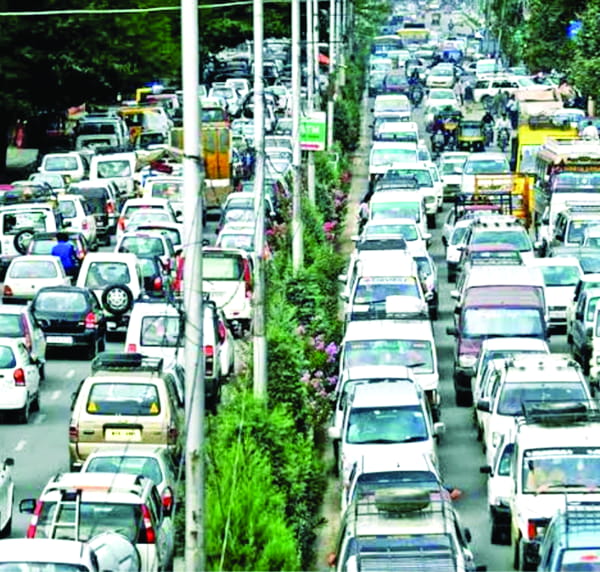Vehicle growth in Kashmir outpaces road expansion

MASROOR AHMAD
SRINAGAR: Kashmir is grappling with a growing traffic crisis that is costing residents hundreds of hours every day and threatening the Valley’s economic life . The root cause of the problem is the rapidly growing vehicle population which far outpaces the development of road infrastructure, particularly in the summer capital Srinagar.
According to rough estimates, Srinagar residents lose an average of one to two hours daily in traffic jams. When calculated annually, this translates to a staggering 365 to 700 hours lost per individual. This significant loss of time not only disrupts personal schedules but also has broader implications for Kashmir’s economic productivity and overall quality of life.
The scale of the problem is evident in the numbers. Kashmir currently has over 900,000 registered vehicles, with approximately 75,000 new vehicles added to the roads each year.
This influx, which includes both public and private vehicles as well as two-wheelers, is putting immense pressure on the existing road network.
A senior Public Works Department official highlighted the challenges in addressing the issue.
“Road length in Kashmir is over 25,000 Kms, but more than road length, it’s the widening of roads where the bottlenecks are,” the official stated.
He pointed out that while many buildings and shops earmarked for demolition to facilitate road widening were identified a decade ago, the cost of compensation has skyrocketed. “If a house which comes under road widening was estimated at Rs 10 lakh ten years back, now the government has to pay a compensation of minimum Rs 1 crore,” he explained.
The situation in Srinagar is particularly dire. Three crucial road widening projects – the Khanyar-Zadibal-Pandach road, Syed Meerak Shah Road, and the semi-ring road – remain pending, adding to traffic woes in the city.
Adding to the complexity, recent Smart City initiatives have expanded footpaths in some areas, inadvertently reducing available road space for vehicles.
The impact of this crisis extends beyond mere inconvenience. It affects business efficiency, public transportation reliability, emergency service response times, and the tourism industry.
The rapid urbanization and growth in vehicle ownership have overwhelmed the existing urban transport system. Vehicle registrations in Srinagar have risen from 17,000 per year in 2011 to 24,000 in 2018.
The city now sees a total of 4.056 million daily trips, with a per capita trip rate of 1.80 (including walking) and 1.5 (excluding walking).
According to experts, addressing Kashmir’s traffic crisis will require a comprehensive approach.
Potential solutions include accelerating pending road widening projects, implementing intelligent traffic management systems, and encouraging alternative transportation modes.
However, with the average monthly household income in Srinagar at about Rs 26,384, the affordability of private vehicles remains high, further complicating the issue.
